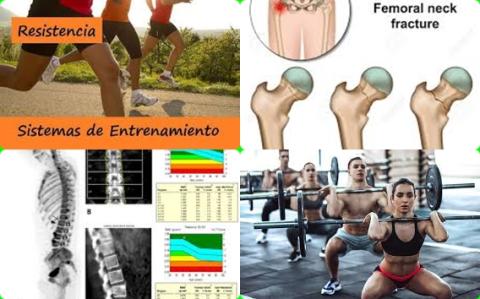
Objectives:
Is there a difference between high-load (≥70 of 1RM) and low-load (70 of 1RM) resistance training (RT) on femoral neck and lumbar spine bone mineral density (BMD) in middle-aged and older people?
Study design:
This review article included 6 RCTs.
Results and conclusions:
The investigators found the meta-analysis revealed no difference in femoral neck bone mineral density [MD = 0.00 g/cm2, 95% CI = -0.01 to 0.01, p = 0.63, I2 = 47%, p = 0.07] and lumbar spine bone mineral density [MD = 0.01 g/cm2, 95% CI = -0.00 to 0.02, p = 0.12, I2 = 59%, p = 0.02] between high-load (≥70 of 1RM) resistance training group and low-load (70 of 1RM) resistance training group.
The investigators found subgroup analysis revealed a significant effect of high-load resistance training on femoral neck bone mineral density when participants presented normal bone mineral density values [MD = 0.01 g/cm2, 95% CI = 0.00 to 0.02, p = 0.04] and on interventions lasting up to 6 months [MD = 0.01 g/cm2, 95% CI = 0.00 to 0.02, p = 0.03].
The investigators concluded both high-load (≥70 of 1RM) and low-load (70 of 1RM) resistance training (RT) have similar effects on femoral neck and lumbar spine bone mineral density (BMD) in middle-aged and older people.
Original title:
High and Low-Load Resistance Training Produce Similar Effects on Bone Mineral Density of Middle-Aged and Older People: A Systematic Review With Meta-Analysis of Randomized Clinical Trials by Souza D, Barbalho M, […], Gentil P.
Link:
https://www.sciencedirect.com/science/article/abs/pii/S0531556520303211?via%3Dihub
Additional information of El Mondo:
Find here more information/studies about sport nutrition.